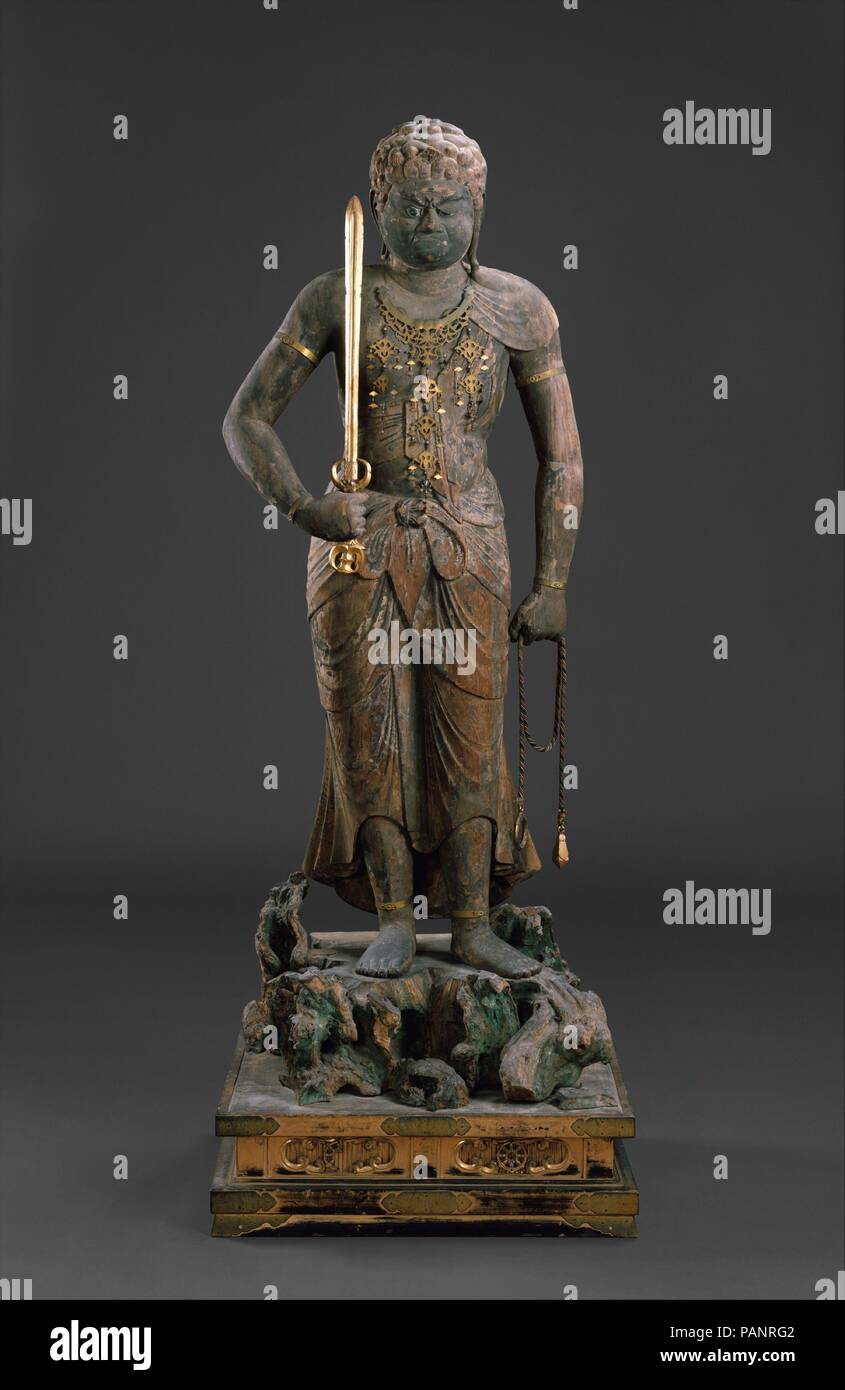Fudo Myoo (Achala-vidyaraja). Culture: Japan. Dimensions: H. 63 3/4 in. (162 cm). Date: 12th century. Fudo Myoo is the most widely represented of the Buddhist deities known as Myoo, or Kings of Brightness. A fierce protector of the Buddhist Law, he is a direct emanation of the Buddha Dainichi Nyorai, the principal Buddha of Esoteric Buddhism. The first sculptures of Fudo made in Japan were seated, but standing sculptures like this one were carved beginning in the eleventh century. Fudo uses his sword to cut through ignorance and his lasso to reign in those who would block the path to enlighte

Image details
Contributor:
Album / Alamy Stock PhotoImage ID:
PANRG2File size:
31.2 MB (769.5 KB Compressed download)Releases:
Model - no | Property - noDo I need a release?Dimensions:
2662 x 4094 px | 22.5 x 34.7 cm | 8.9 x 13.6 inches | 300dpiPhotographer:
AlbumMore information:
This image could have imperfections as it’s either historical or reportage.
Fudo Myoo (Achala-vidyaraja). Culture: Japan. Dimensions: H. 63 3/4 in. (162 cm). Date: 12th century. Fudo Myoo is the most widely represented of the Buddhist deities known as Myoo, or Kings of Brightness. A fierce protector of the Buddhist Law, he is a direct emanation of the Buddha Dainichi Nyorai, the principal Buddha of Esoteric Buddhism. The first sculptures of Fudo made in Japan were seated, but standing sculptures like this one were carved beginning in the eleventh century. Fudo uses his sword to cut through ignorance and his lasso to reign in those who would block the path to enlightenment. The heavy weight of the shoulders and back is planted firmly on the stiffened legs, appropriate for a deity whose name means the "Immovable." This statue, originally composed of six hollowed-out pieces of wood, was formerly the central icon of the Kuhonji Gomado in Funasaka, twenty miles northwest of Kyoto. Museum: Metropolitan Museum of Art, New York, USA.